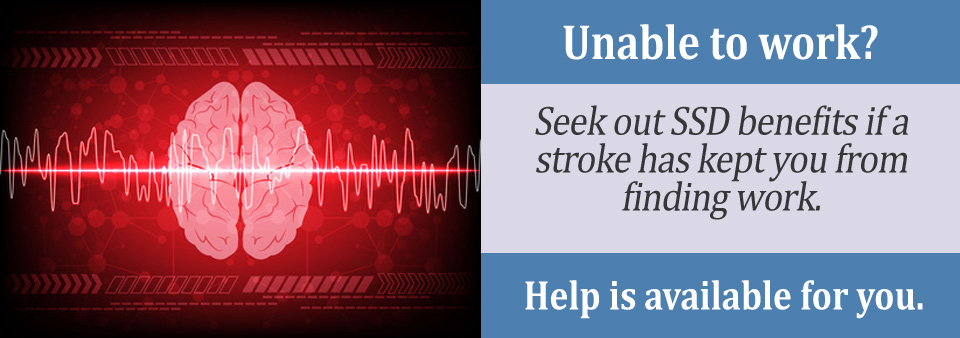According to research data, around 800,000 Americans suffer from some form of stroke each year. The frequency of the ailment makes it the most common cause of prolonged disability symptoms. Also referred to as a cerebral vascular accident (CVA), a stroke ranks as the fifth leading cause of death and for patients that survive a stroke, it can lead to a lifelong rehabilitation process.
Americans that have suffered from stroke symptoms that prevent them from working can seek financial help. Created by the Social Security Administration (SSA), the Social Security Disability Insurance (SSDI) program ensures anyone that has disabling medical symptoms can receive financial assistance to take care of medical bills and daily expenses. If you experience a stroke, you might be eligible to receive SSDI benefits.
An Overview of a Stroke
A stroke is triggered by a lack of blood supply to the brain or when a blood vessel in the brain ruptures. Nearly 80% of strokes are the result of blood being prevented from entering the brain. Bleeding in the brain caused by a ruptured blood vessel comprises the remaining 20% of documented strokes. Stroke symptoms depend on the severity of the blood blockage, as well as on where in the brain the blockage occurs. Some of the most common stroke symptoms are weakness, depression, paralysis, and slurred speech. A little more than 10% of stroke patients make full recoveries.
What Medical Documents Do You Need for a SSDI Application?
If a stroke prevents you from working for more than 12 months, you have to submit several medical documents with a SSDI application to qualify for benefits. You need to submit the names, addresses, and phone numbers of every physician, caseworker, and healthcare facility where you underwent treatment. The SSA also requires a list of the medications you have taken to alleviate stroke symptom, as well as the results of lab tests.
Here are some of the medical documents you need to submit with a SSDI application:
- Progress notes made by your physician
- Emergency room reports
- Inpatient hospital records
- Surgery records
- All imaging scans
- Blood work documents
You will also have to submit documentation from your psychologist, physical therapist, and/or social worker, if applicable.

Additional Documentation Required by the SSA
The SSA needs to receive work records, such as when you started missing work because of a stroke. You need to provide information that explains where you worked and what kind of work you performed. Your occupation is an important element of a SSDI application, as it gives the SSA insight into your professional skill set. The SSA requires the submission of your most recent W-2 form, along with your federal tax return that was filed within the past year. You also must provide the SSA with your birth certificate and Social Security number. If you have suffered a stroke, speak with a licensed Social Security lawyer to receive help in completing the SSDI application.
An experienced Social Security attorney will ensure every document requested by the SSA accompanies your SSDI application. Your lawyer will also make sure you submit the proper documents before submission deadlines. Social Security attorneys operate on a contingency fee basis, which means they receive compensation from you only when you receive your benefits from the SSA.